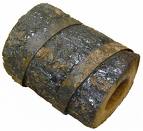Water Plant is done by Roman fort is revealed work:
A 2,000-YEAR-OLD Roman fort has been uncovered on the site of the new 160 million water treatment plants.
The remains of the camp were found during work on the Glencorse plant on the edge of the Pentland Hill’s Regional Park in Midlothian.
It is the hoped they find will yield clues on how the Romans organised their occupation of the area in the first century AD.
The site is the thought to be the Roman marching camp and It is a part of a network of bases, watchtowers and camps across lowland Scotland.
A 2,000-YEAR-OLD Roman fort has been uncovered on the site of the new 160 million water treatment plants.
The remains of the camp  were found during work on the Glencorse plant on the edge of the Pentland Hills Regional Park in Midlothian.
were found during work on the Glencorse plant on the edge of the Pentland Hills Regional Park in Midlothian.
It is the hoped they find will yield clues on how the Romans organised their occupation of the area in the first century AD.
their occupation of the area in the first century AD.
The site is the thought to be the Roman marching camp and It is a part of a network of bases, watchtowers and camps across lowland Scotland.
Historians had suspected there were Roman remains at Glencorse from studying aerial photographs, but this is the first evidence to be found.
No artefacts have been discovered but David Connolly, an archaeologist, described the find as an important piece of the jigsaw.
He added in to the Understanding the Romans in Scotland is a complex matter, as Scotland was not subjected to a single phase of occupation or conquest. Every new discoveryleads in to the further understanding of Roman Scotland.
The Scottish Water project is to be completed by 2010.